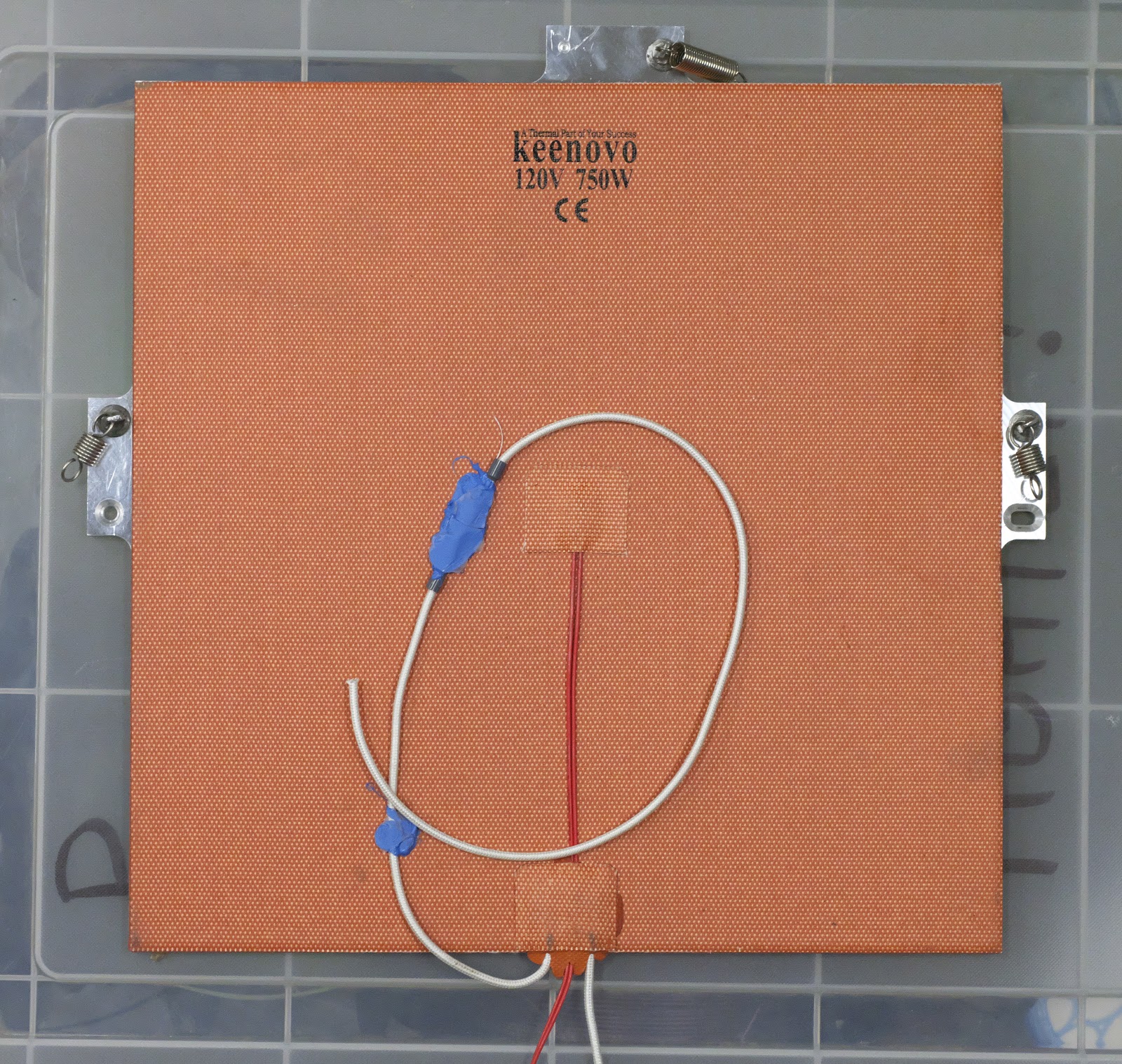Heated bed 220V vs 24V
-
My 2 cents: I've got 2 printers with beds heated by 220V AC silicone mats. Both have been ordered from Keenovo - they offer an option to install a bimetallic thermal switch of the temperature rating of your choosing into the heater itself. Which makes the whole thing a lot safer. I've got a 140 degree switch in one and a 150 in the other, which is plenty for the normal operation and should protect you if the SSR fails closed.
Add some sturdy ground wiring and you're good to go, fairly safe and heats up really fast.
-
I use a 400x400mm ~1300W 220V silicone heater on a 500x500x8 Aluminium bed. So far so good. Barely any wait for it to get to temperature. The seller said it can withstand up to 200 C so I tested something like 150-180 to see what will melt. I made sure it does not attach to plastic directly and grounded the thing.
-
@claustro said in Heated bed 220V vs 24V:
My psu is brand new RSP-500-24 has a rated power of 504W
Are you ok with the fan noise of the RSP-500-24? Switching to mains power will eliminate it.
-
@mike said in Heated bed 220V vs 24V:
from Keenovo - they offer an option to install a bimetallic thermal switch of the temperature rating of your choosing
The Voron people recommend to add your own rather than using the built in. Here is their heated bed related video, many good general tips. https://www.youtube.com/watch?v=8C4jtj0OuE4
-
@zapta You can get bimetallic, self-resetting TCOs built into the heater, but it's probably not a good idea. If there's a fault that causes an overheating condition, you don't want the TCO to keep cycling the power to the heater. You want the thing to shut down.
I would not trust thermal fuses purchased via Ali-express. This is not the place to be penny wise and pound foolish. TCOs with full safety certifications only cost about $1. Read the data sheet to find out how to select the TCO that will trip at the right temperature- they self heat and operate at a higher temperature than the bed. In my printer's case (about 6A current), the TCO operating temperature should be about 24C above the maximum expected operating temperature.
When I built my corexy printer about 2 years ago I mounted a TCO on the bed plate. A few months ago I noticed that the adhesive (468MP) holding the heater on the bed plate was starting to let go. That made me realize that it's much better to mount the TCO on the heater so that if it comes off the bed plate it will still do its intended job. I've seen 468MP let go of the PEI sheet on top of the bed after about 2 years of temperature cycling, too, so I think that that's about all you can expect from that adhesive.
I recently converted a printer at the makerspace to a kinematic mount and mounted the TCO on the heater using high temperature silicone (the blue blob in the photo). I'll be doing the same on the corexy printer soon, and mounting the heater to the plate using the same high temperature silicone.

-
I like these Manually resetable ones
 Can be either glued with a thermal adhesive or screwed to the bed itself you could even belt and braces it by using one of these along with a non resettable time of a slightly higher temp onto the heater as Mark has done.
Can be either glued with a thermal adhesive or screwed to the bed itself you could even belt and braces it by using one of these along with a non resettable time of a slightly higher temp onto the heater as Mark has done. -
@claustro said in Heated bed 220V vs 24V:
should only the bed grounded if this will be isolated from the frame by V-wheels? I am frightened to not be able to ground all the printer correctly.
If you have live mains ideally every metallic piece that you may touch should be grounded. This is to ensure if one of the mains wires come loose, or make a short circuit to something the fuse or RCD should fail and protect you from touching something that is live and be electrocuted, or overheat and cause a fire. If the bed moves this becomes more important as it increases the risk of failure.
-
I also use this product on the mains power line, feels safer this way. I think it should trigger even if there is no ground connection (?).
-
Depends on construction, most likely it will have a current transformer across N and L, and any unbalance over the threashold should trigger a fault. However the test button will not work without a ground connection (it needs to send some current to somewhere, ground being the only option).
-
@bearer,that's a good point, but I just tested without ground connection and the test button does shut the power.
Possibly it simulates unbalance by sending current from L after the current transformer back to N before the current transformer, but I don't know for sure.